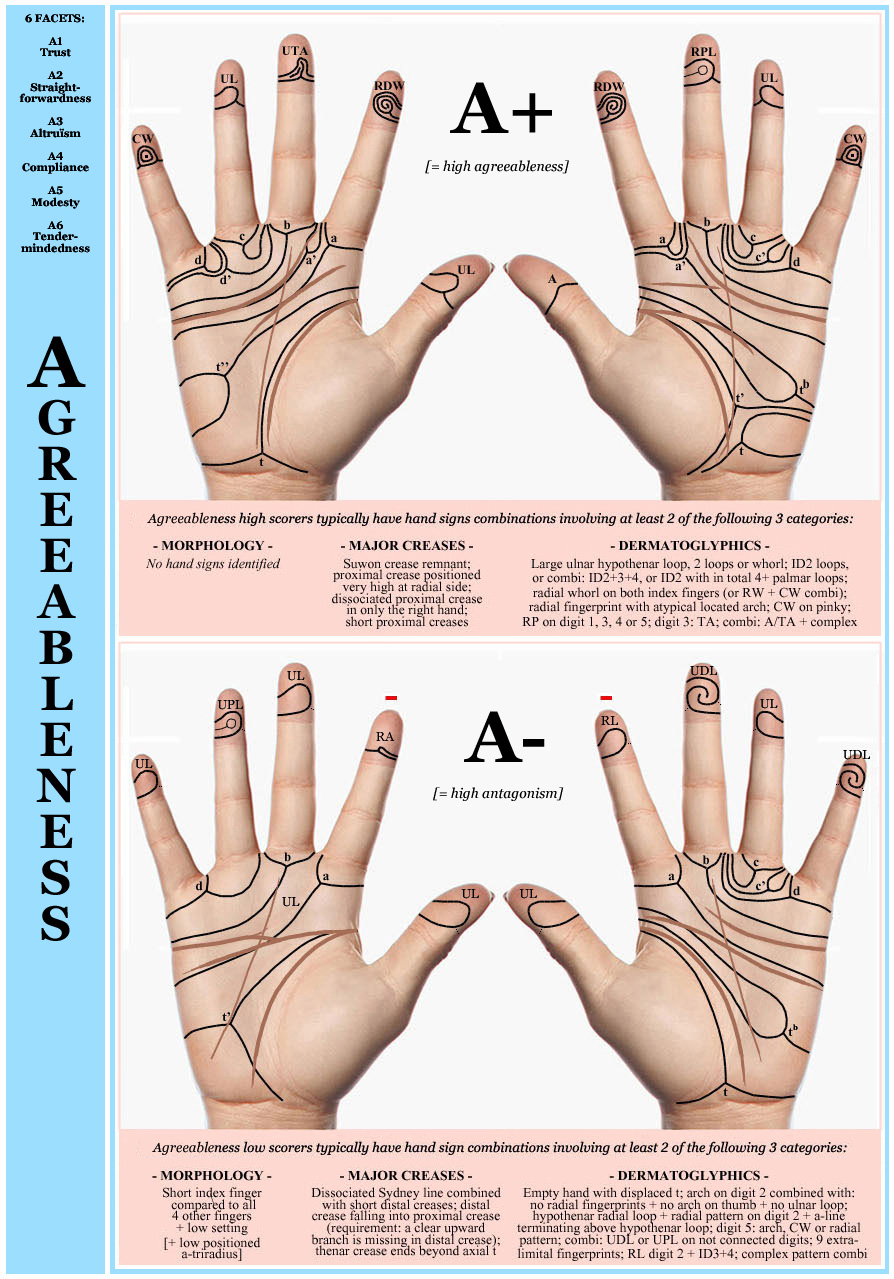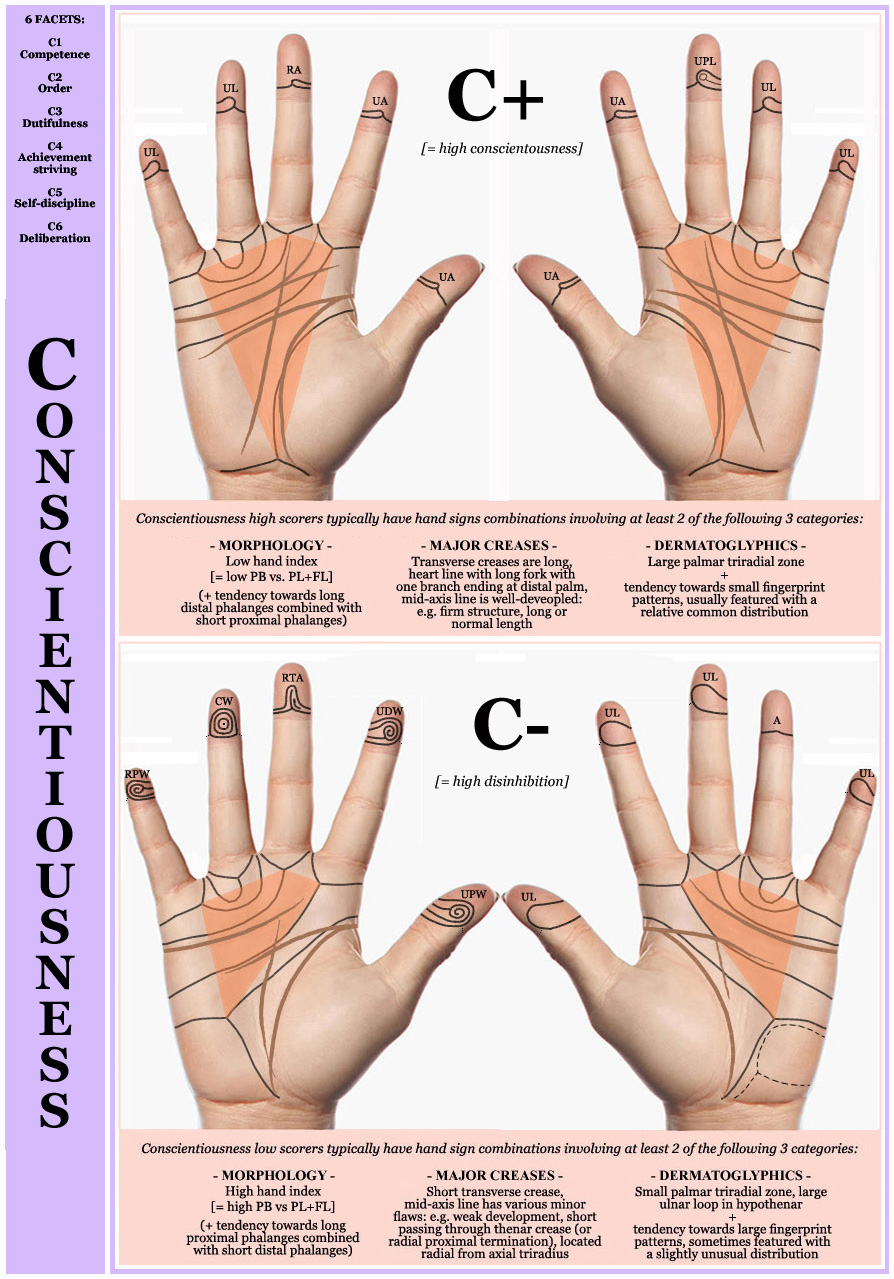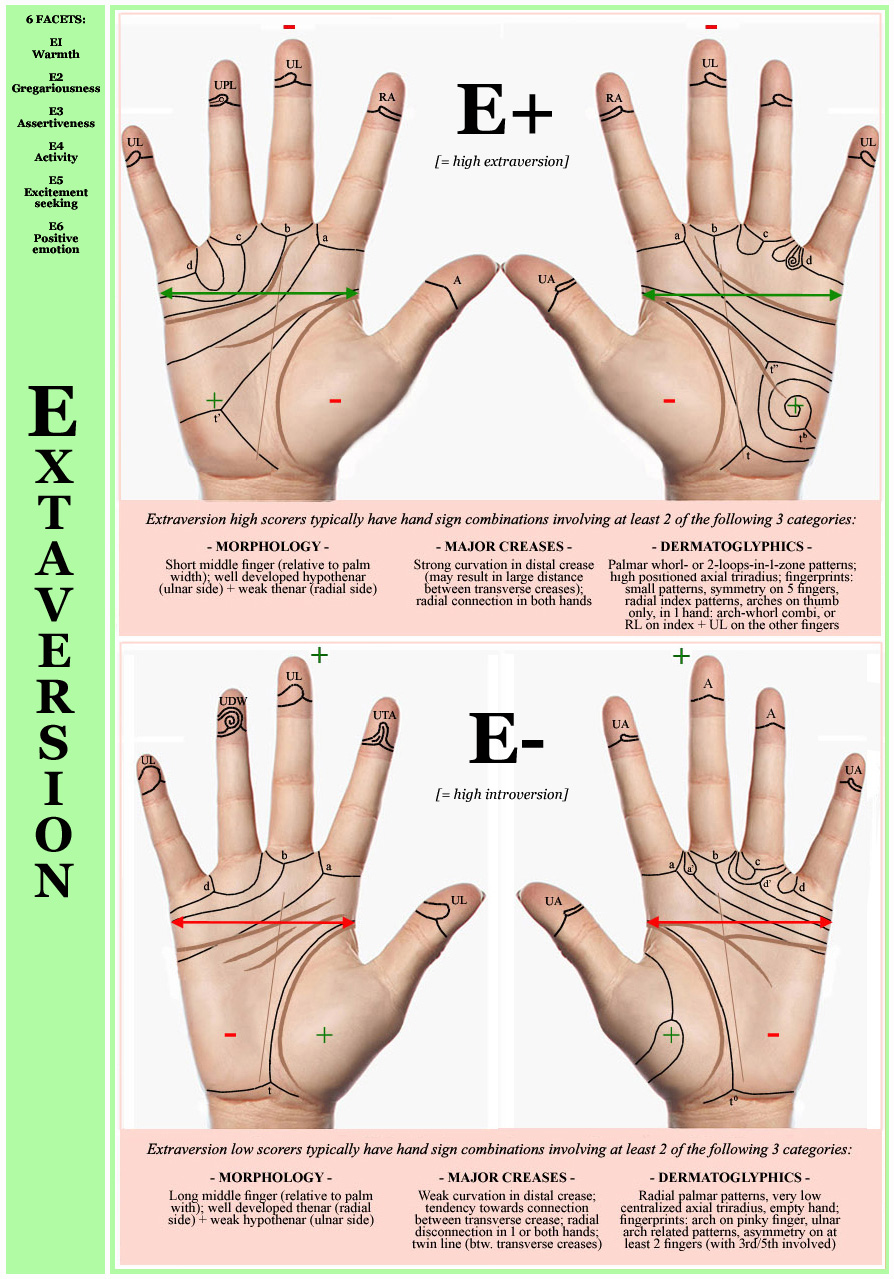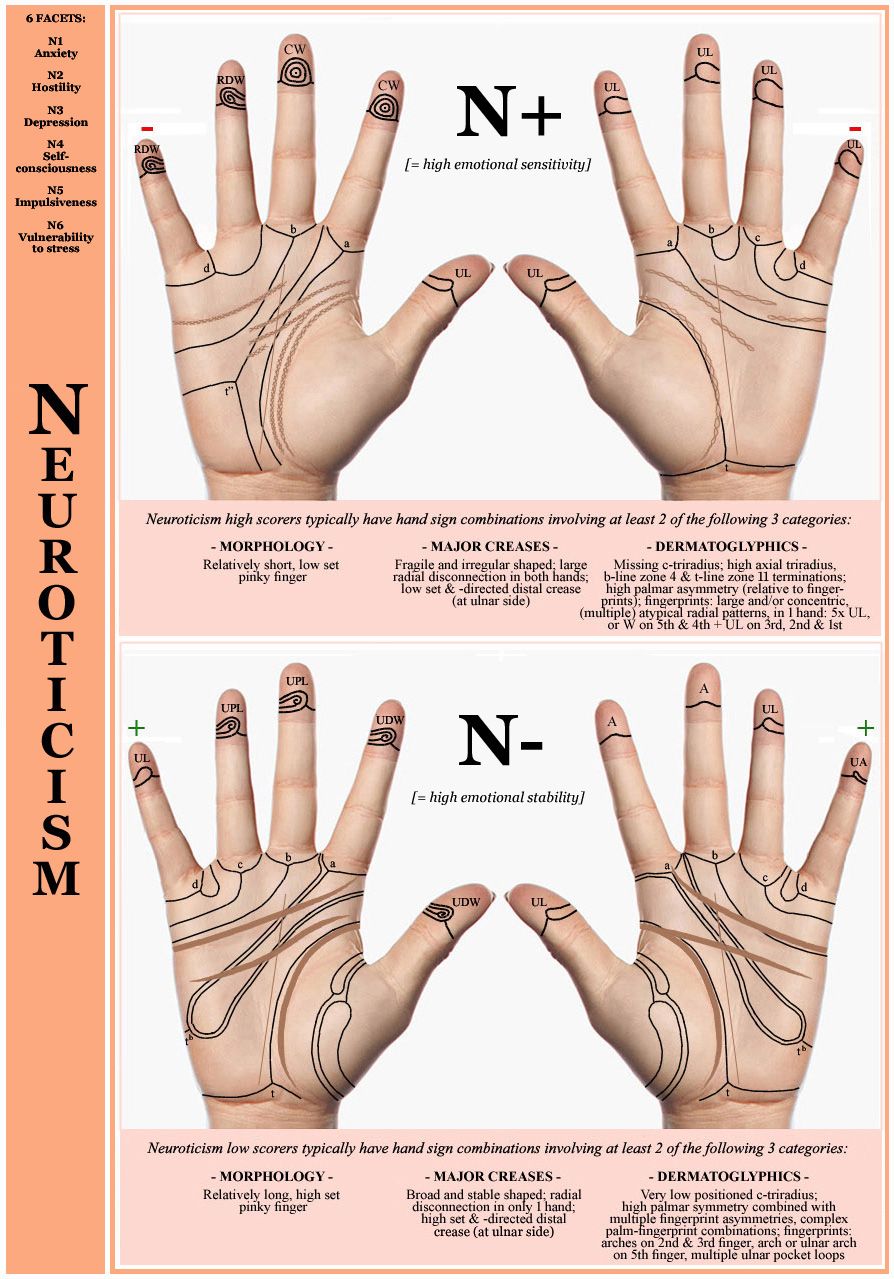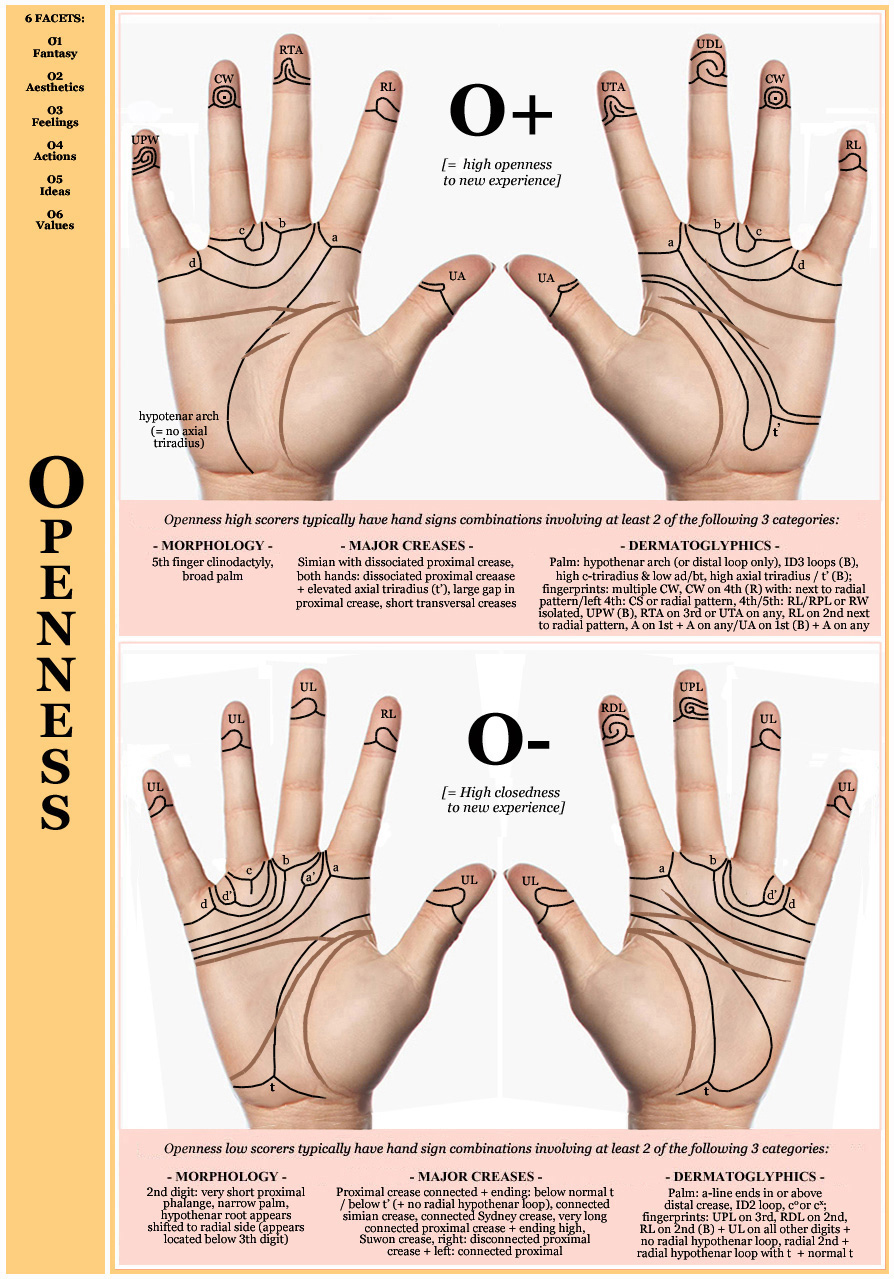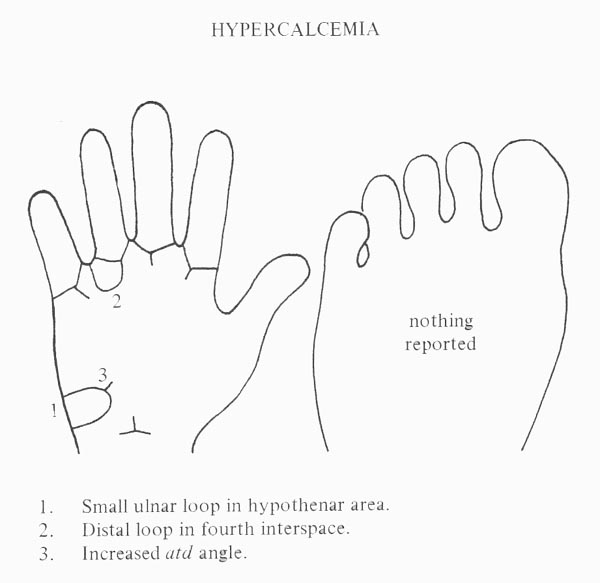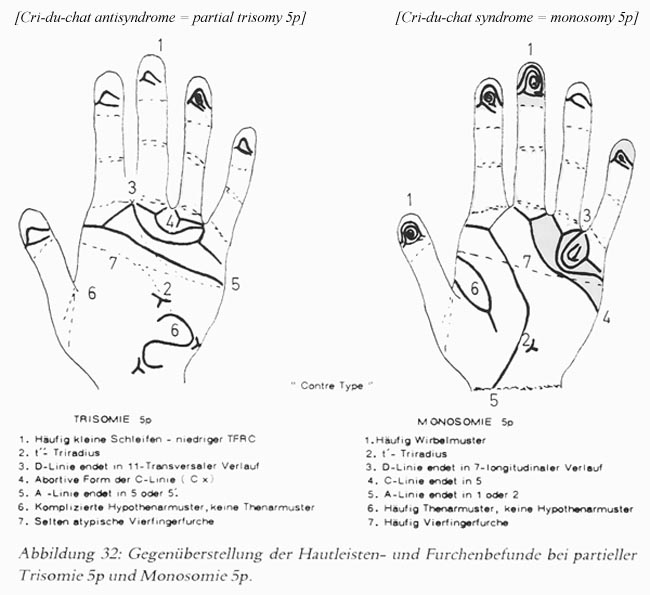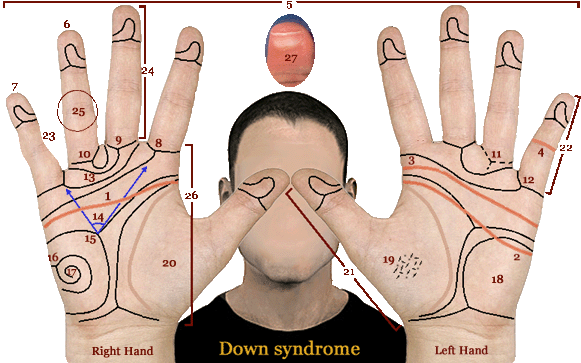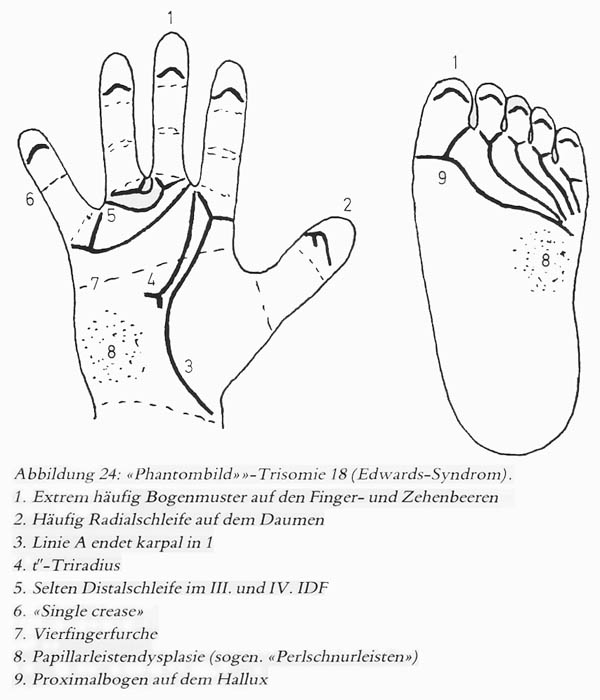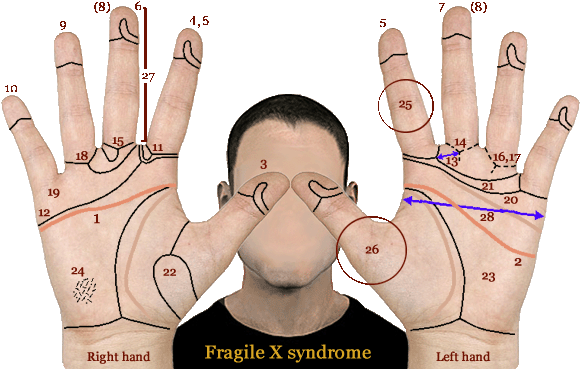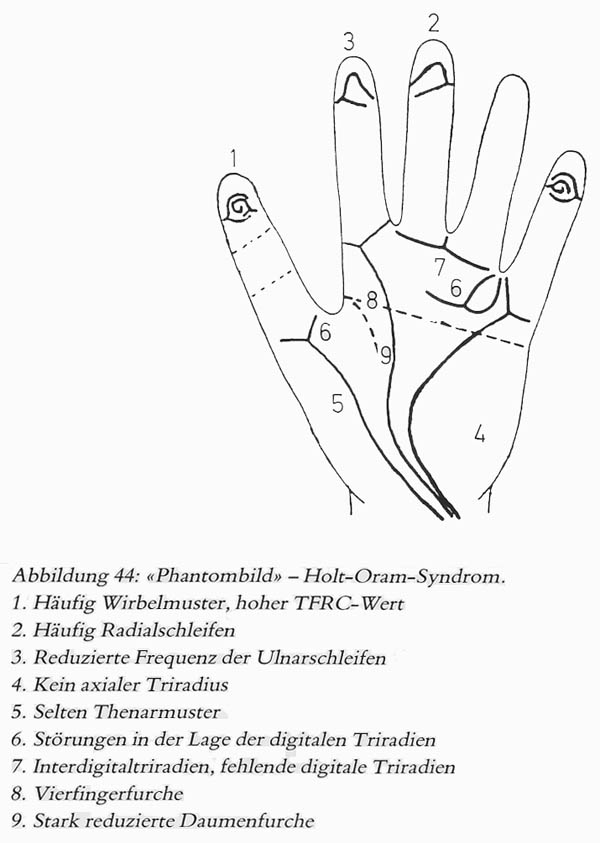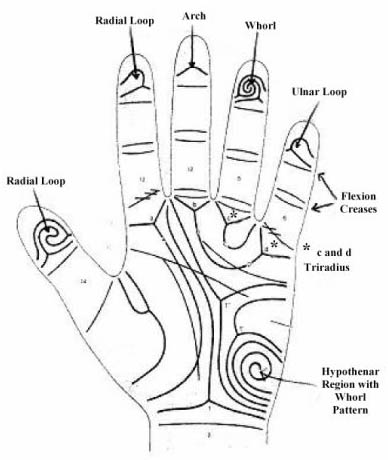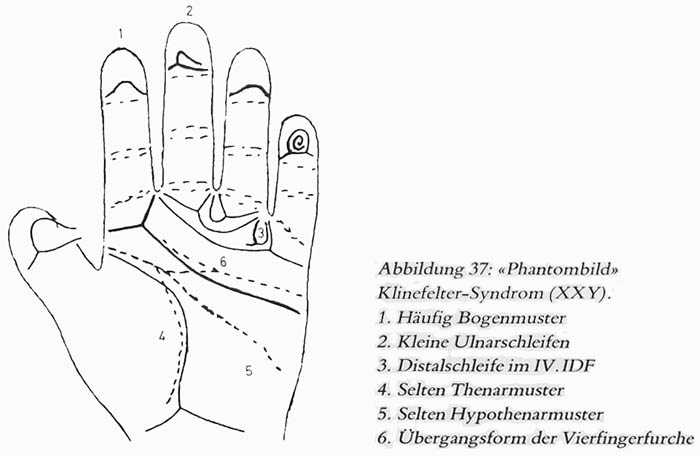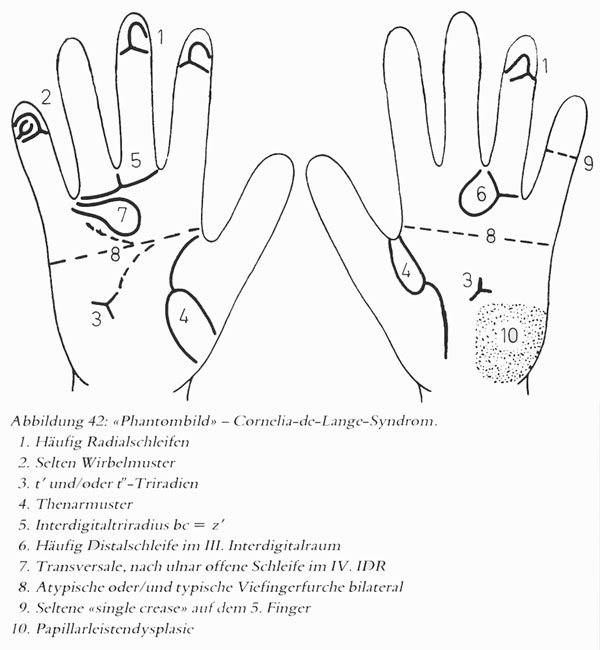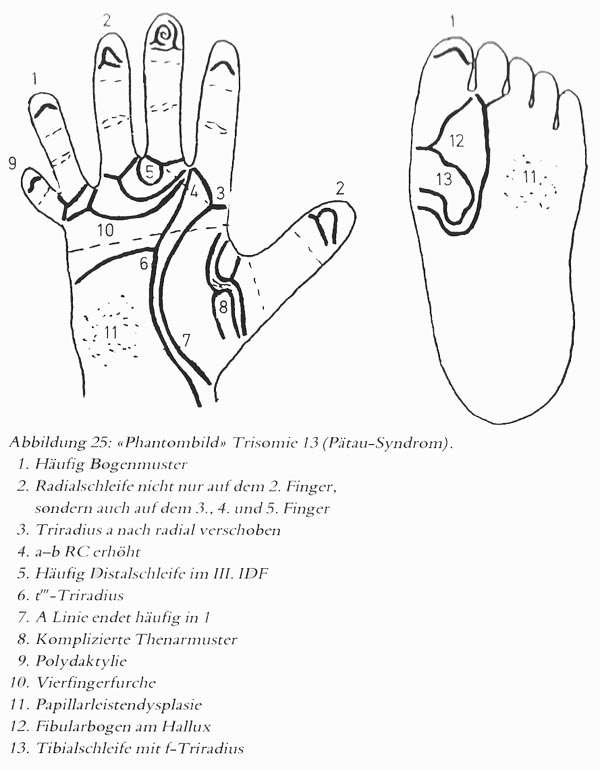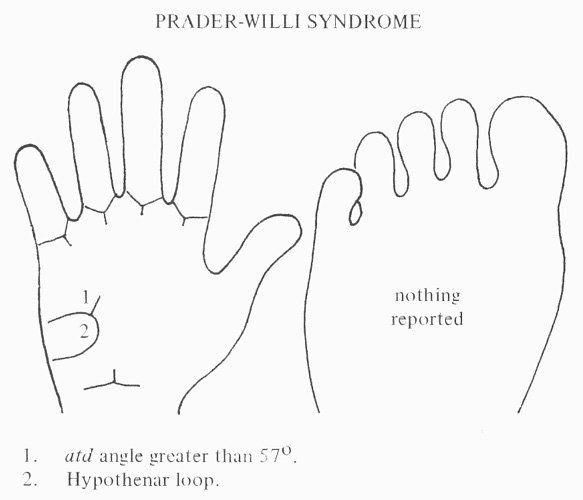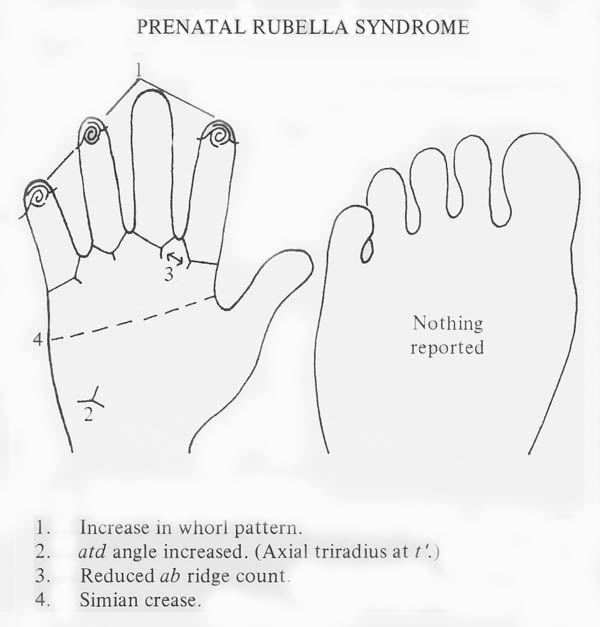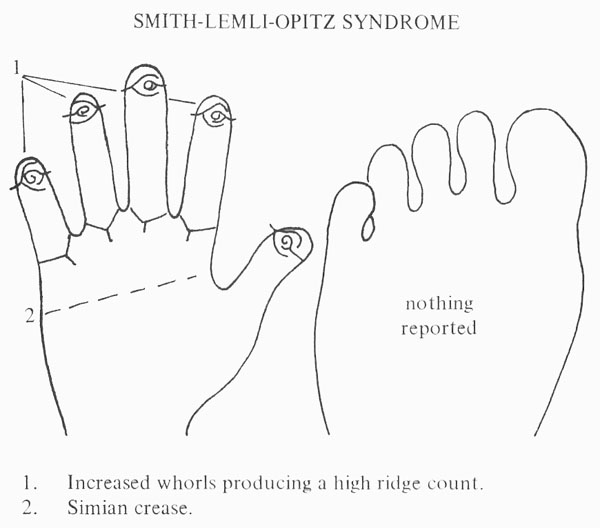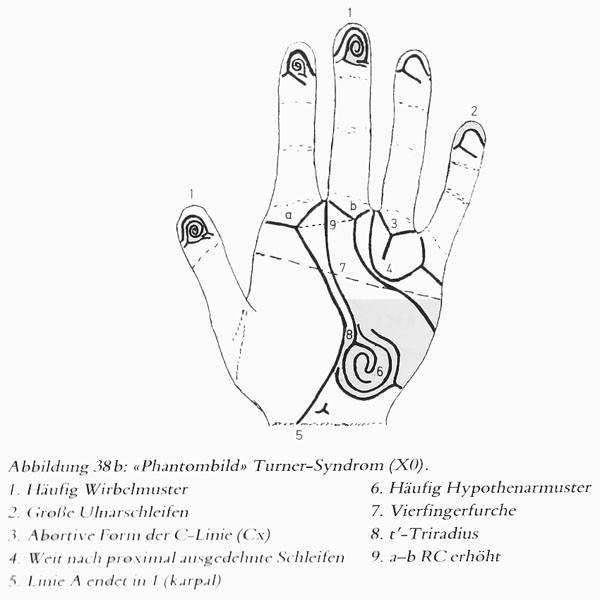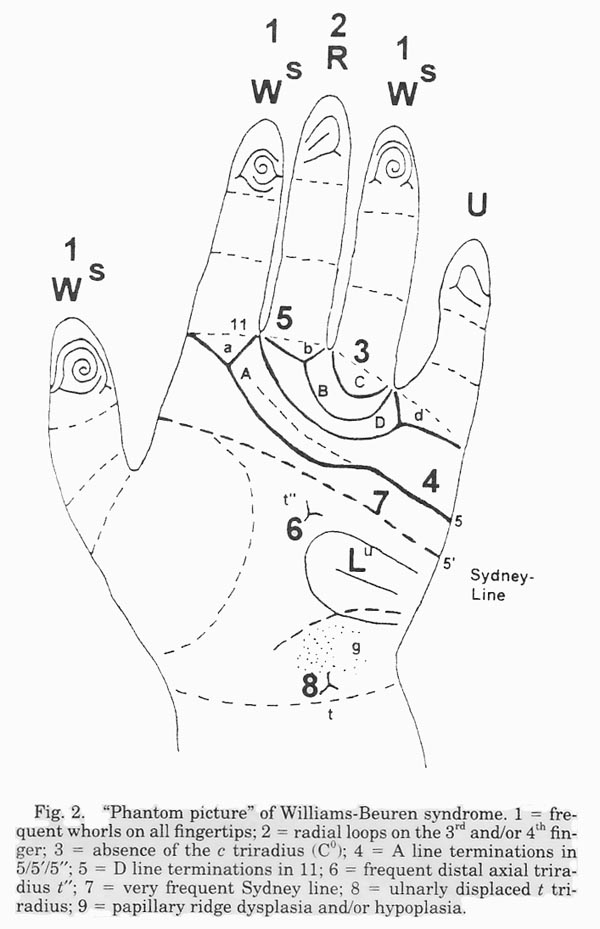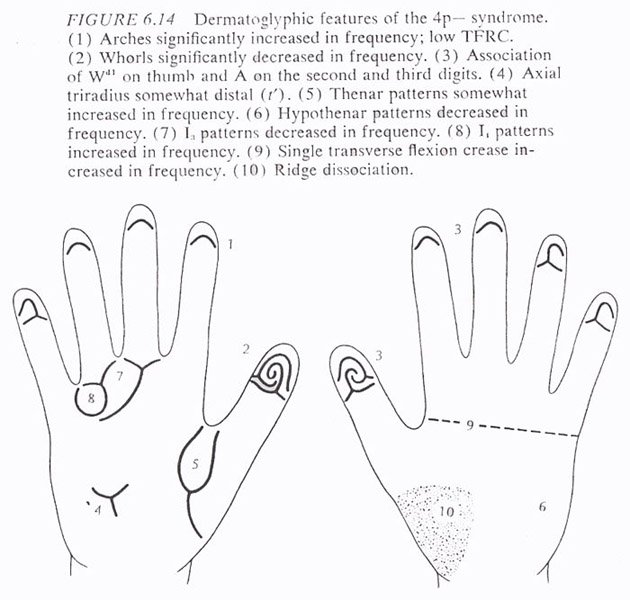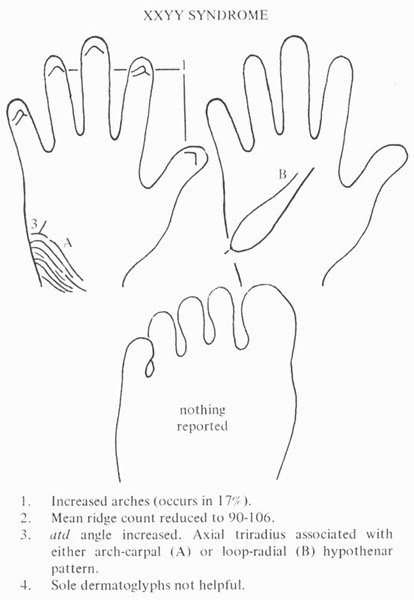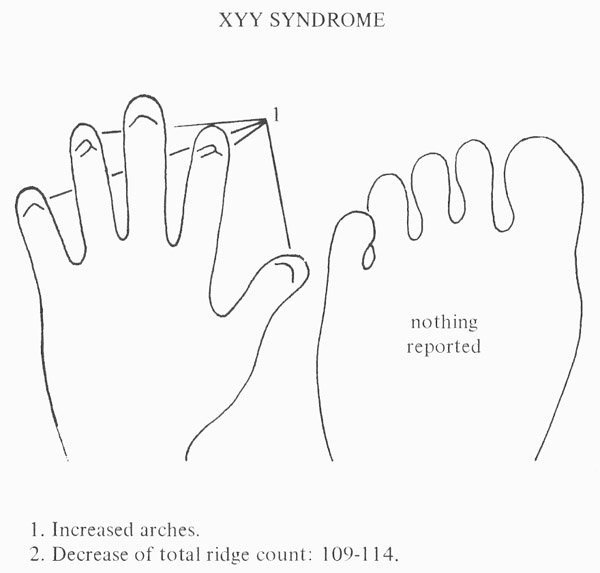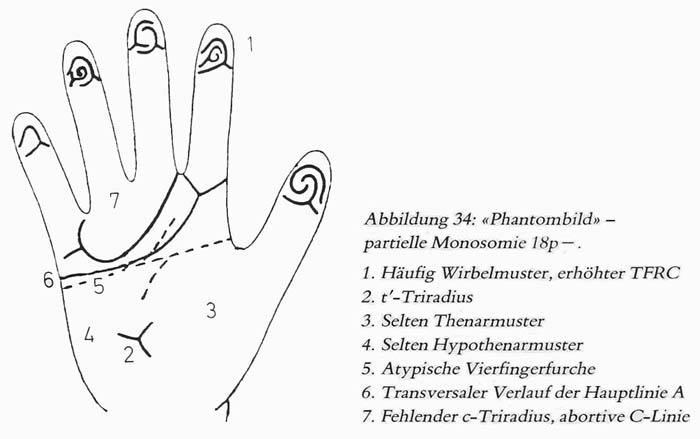
Scientific Hand Charts Collection:
Arthrogryposis!
1 Hand Chart for Arthrogryposis!
Arthrogryposis multiplex congenita (arthromyogryposis) is an infrequent cause of severe crippling, manifesting as congenital joint contractures in two or more areas of the body.
Prevalence: close to 1 in 10,000 people have arthrogryposis.
One rather superficial hand chart is available for arthrogryposis describing the significance of various typical features inside especially the dermatoglyphics, which manifest often combined with a simian line (= single transverse flexion crease) or Sydney line - see picture below.
NOTICE: Individual hand features described below should not get associated in isolation with any theme; only combinations involving multiple hand levels have potential for diagnostic purposes.
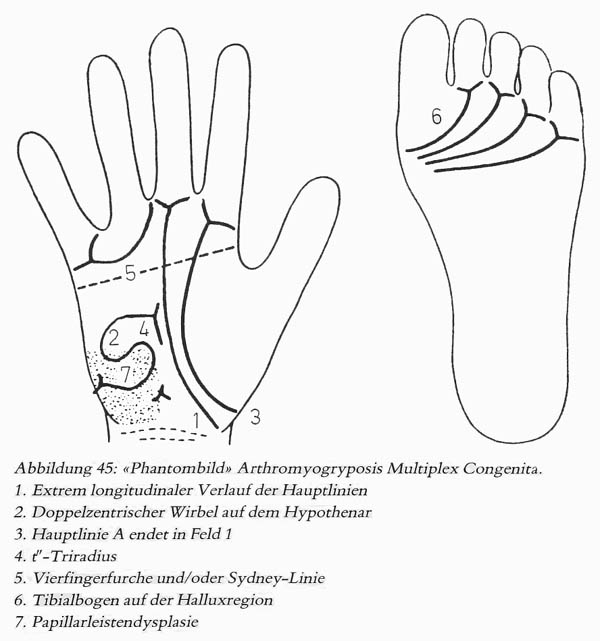
Hautleistenfibel (1981), p.119;
authors: A. Rodewald & H. Zankl
Other significant hand signs (not reported inside the hand charts):
Every joint in the body has typical signs and symptoms of deviation; for the wrist this concerns volar and ulnar deviation, and for the hand this manifests typically as fingers in fixed flexion combined with thumb in fixed in the palm (see photo below - both hands also have a simian line).
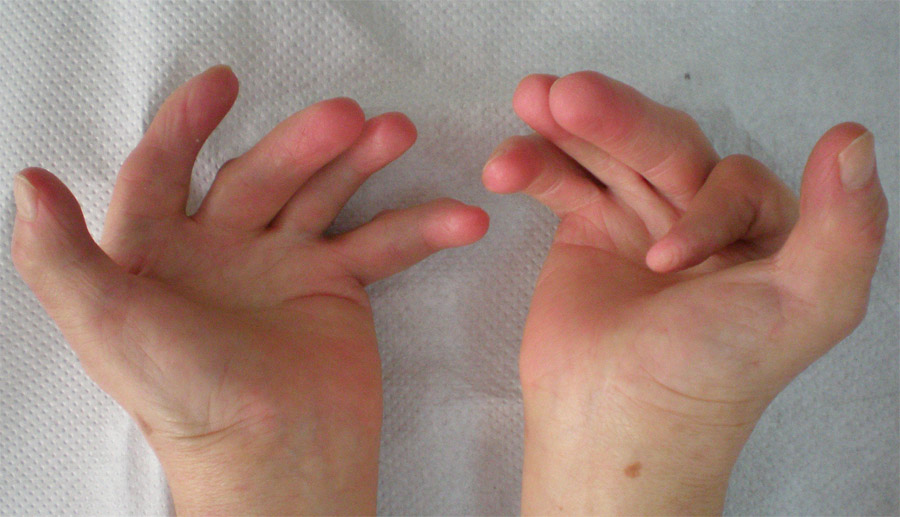
In newborns, the characteristics of the disorder may already be seen in their hands which are clenched, with fingers that overlap.
The characteristic features of distal arthrogryposis type 1 include: permanently bent fingers and toes (camptodactyly), overlapping fingers, and a hand deformity in which all of the fingers are angled outward toward the fifth finger (ulnar deviation).
Hypoplastic and/or absence of some interphalangeal flexion creases also belong to the major diagnostic criteria (source: M. Bamshad et al., 2009).
The soft tissue envelope in congenital contractual conditions such as clasped- or arthrogrypotic thumbs is often deficient in two planes: the thumb-index web and the flexor aspect of the thumb. There is often an appearance of increased skin at the base of the index finger that is part of the deformity - see the hand displayed left below, which belong to a person who has a mild form of arthrogryposis (hand displayed right below had surgical correction).
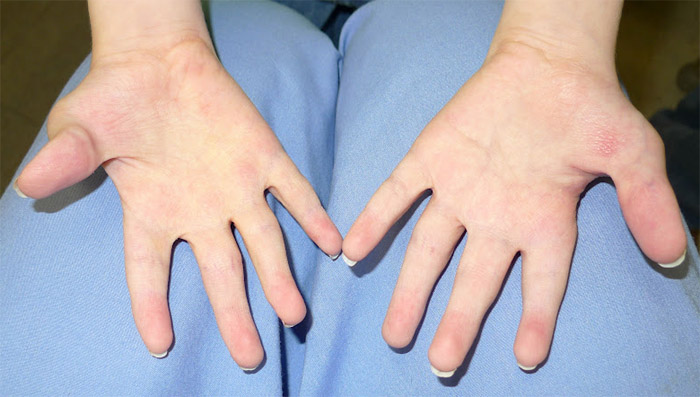
All significant hand signs listed above for arthrogryposis together cover four out of the nine perspectives of the hand as defined according Multi-Perspective Hand Reading (including hand level 2, 6, 8 & 9).
A summary of the most significant hand sign combinations in athrogryposis is described here:
Decoding the language of the hand:
hand sign combinations in arthrogryposis!
Hand charts are available for many other diagnostic issues;
start browsing HERE
![]() SCIENTIFIC HAND CHARTS: Introduction
SCIENTIFIC HAND CHARTS: Introduction
Hand charts for Big Five personality dimensions:
• Hand chart(s) for Agreeableness (2x: 1 in 4 people)
• Hand chart(s) for Conscientiousness (2x: 1 in 4 people)
• Hand chart(s) for Extraversion (2x: 1 in 4 people)
• Hand chart(s) Neuroticism (2x: 1 in 4 people)
• Hand chart(s) Openness (2x: 1 in 4 people)
Hand charts for diseases:
• Hand charts for hypercalcemia (1 in 4,000 people)
Hand charts for syndromes:
• Hand charts for arthrogryposis (1 in 10,000 people)
• Hand charts for cri-du-chat syndrome (1 in 30,000 people)
• Hand charts for Down syndrome (1 in 700 live births)
• Hand charts for Edwards syndrome (1 in 6,000 live births)
• Hand charts for fetal alcolhol syndrome (1 in 500 people)
• Hand charts for fragile-X syndrome (1 in 5,000 people)
• Hand charts for Holt-Oram syndrome (1 in 100,000 live b.)
• Hand charts for Kabuki syndrome (1 in 32,000 people)
• Hand charts for Klinefelter syndrome (1 in 1000 males)
• Hand charts for de Lange syndrome (1 in 15,000 live births)
• Hand charts for Marfan syndrome (1 in 5,000 people)
• Hand charts for Patau syndrome (1 in 15,000 live births)
• Hand charts for Prader-Willi syndrome (1 in 15,000 births)
• Hand charts for Rubella syndrome (1 in 100,000 people)
• Hand charts for Rubinstein syndrome (1 in 200,000 births)
• Hand charts for SLOS (1 in 40,000 births)
• Hand charts for Turner syndrome (1 in 2,000 female births)
• Hand charts for Warkany syndrome (1 in 200,000 births)
• Hand charts for Williams syndrome (1 in 14,000 births)
• Hand charts for Wolf-Hirschhorn syndrome (1 in 50,000 b.)
• Hand charts for XXYY syndrome (1 in 30,000 male births)
• Hand charts for XYY syndrome (1 in 1,000 male births)
• Hand charts for 18 deletion syndromes (2 in 40,000 live b.)
NOTICE: Reflexology hand charts are not included in this section because the scientific foundation of any of such charts is actually unknown; nevertheless, you can read more about the fundamentals of such charts HERE.
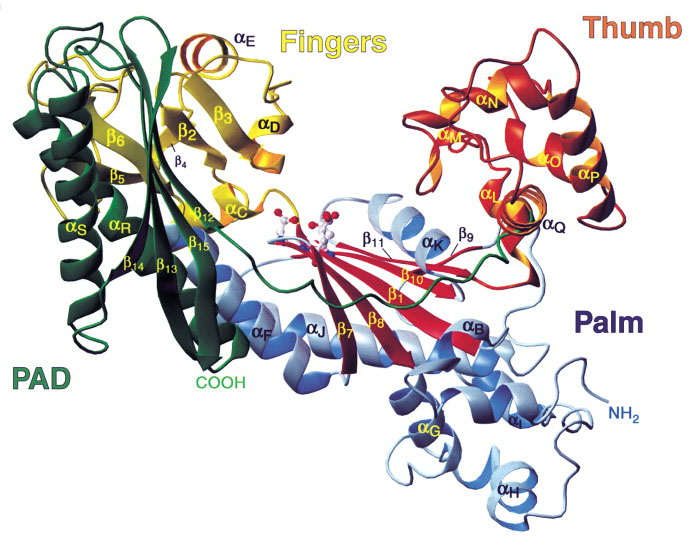
Other charts & maps:
• Fingerprints world map
• Hand reading experts world map
• Hand reflexology charts
